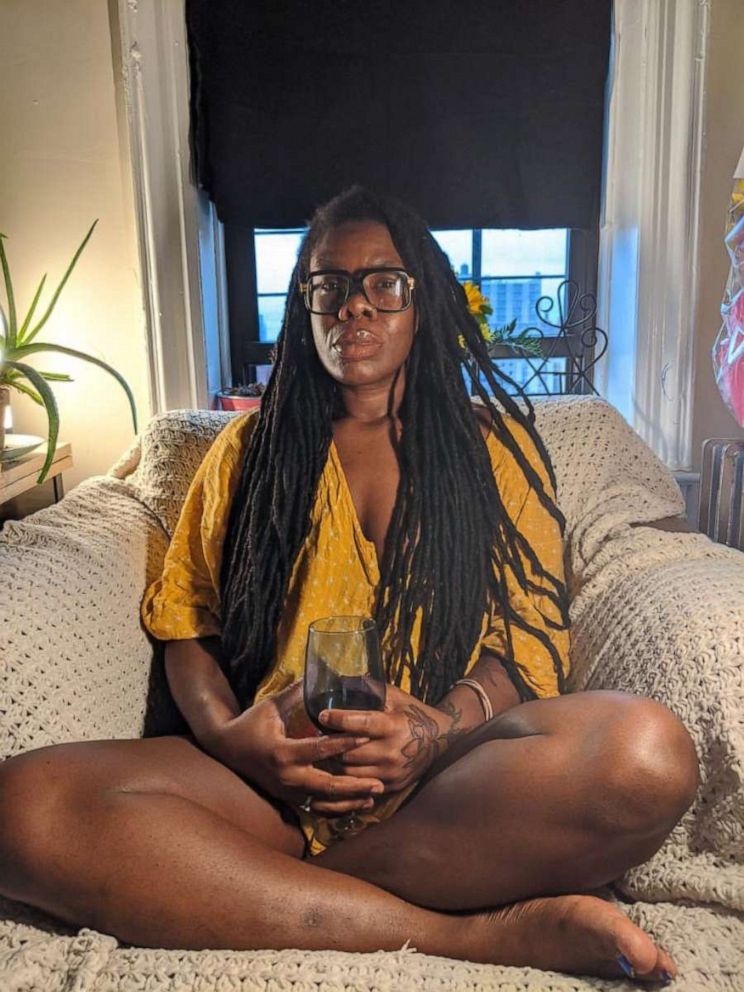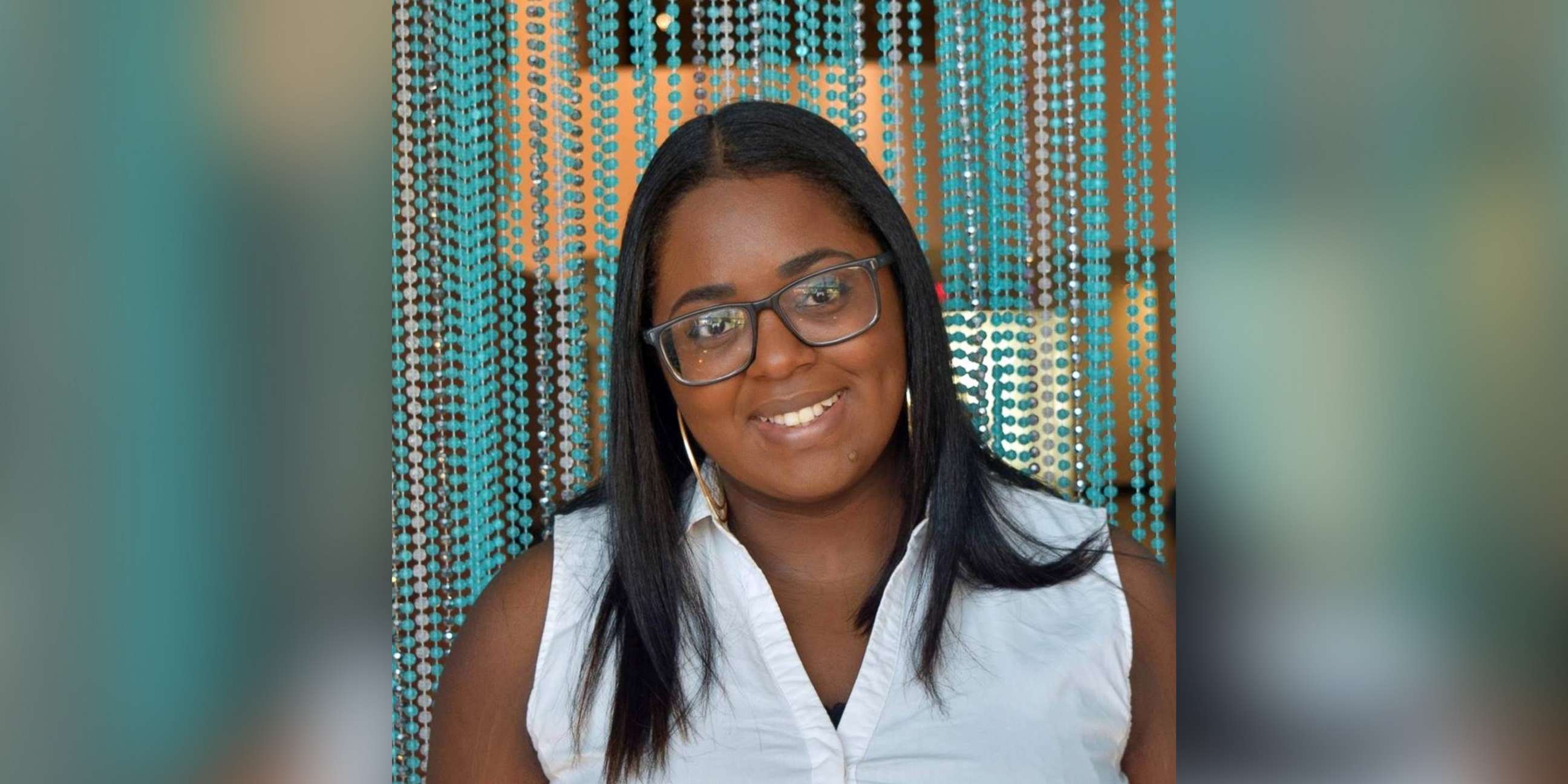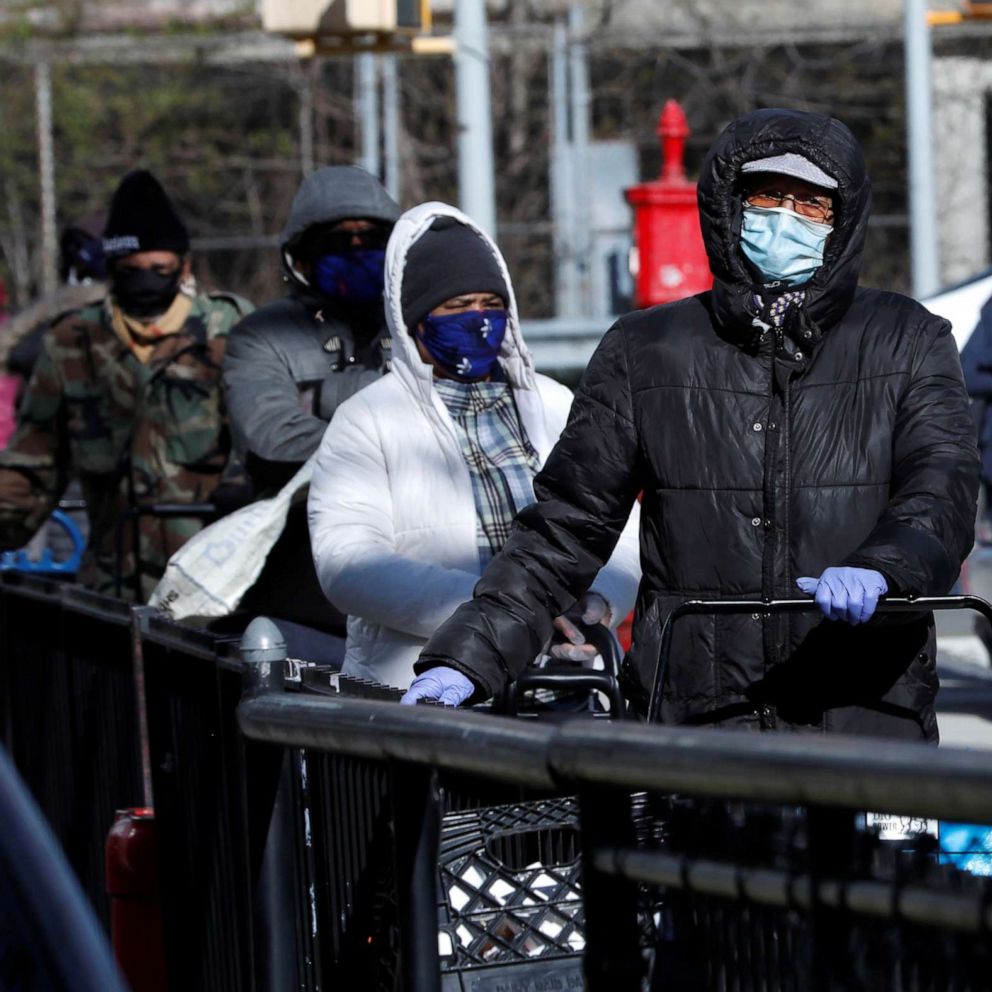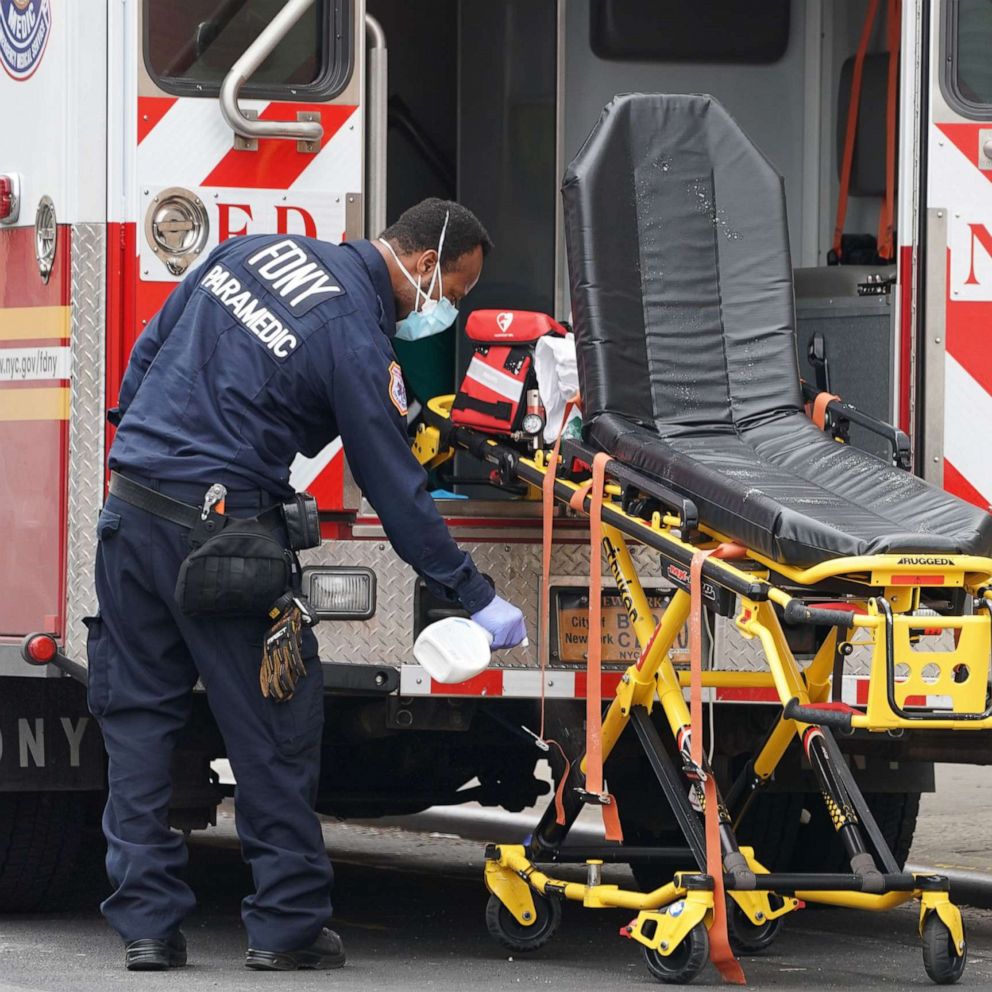COVID-19 exposes mistrust, health care inequality going back generations for African Americans
The horror of COVID-19 has taken a heavy toll on communities of color.
Tanya Fields had textbook COVID-19 symptoms. She was lethargic, and experienced chills, body aches, fever and a dry cough. Rather than going to the hospital, she opted to recover in her three-bedroom South Bronx apartment with no real way to isolate from her six children.
"Black folks don’t get treated well in hospitals and so if I can stay at home and get better, if I don't need a prescription from the hospital, why the hell am I going?," Fields, an activist, told ABC News.
Rana Mungin, an asthmatic and teacher from East New York, Brooklyn, wasn’t admitted to the hospital for COVID-19 symptoms until her third visit when she could barely breathe. On the 30-year-old's second attempt to receive care, her sister Mia, a nurse, said an ambulance attendant didn’t take her concerns seriously.
"He tried to insinuate that she was having a panic attack, you know, and he was trying to really convince her not to go to the hospital," said Mia Mungin.
The next day, on her third visit to the hospital, Rana Mungin was intubated and remained on a ventilator for 30 days before being moved to a long-term care facility in New Jersey, the closest facility accepting COVID-19 patients. Mia Mungin told ABC News her sister died April 27.
The family of Kevin Clark, a respiratory therapist from Jamaica, Queens, believes a doctor failed to give him proper guidance when he showed up with COVID-19 symptoms.

"If I go to the doctor and I tell you, 'I'm in a lot of pain. I don't feel good. My breathing is sporadic, and I don't have a fever now but it goes up and down,'" said his sister Kathleen Clark. "And you know, this coronavirus is going around and those are all the symptoms, I believe in my heart that the doctor treated him like he had the flu or something."
Kevin died from complications related to COVID-19 on April 21 after two weeks in a Queens hospital.
In New York City, the horror of COVID-19 has taken a heavy toll on communities of color, with black New Yorkers at a higher risk of contracting and succumbing to the virus.
African Americans in coronavirus hot spots are twice as likely to die from the illness than their white counterparts. Within Chicago's COVID-19 epicenter, black Americans comprised 71% of COVID-19 deaths despite representing only 30% of the population. Black people account for 71% of the deaths in Milwaukee County, Wisconsin, but are only 26% of the city’s population and account for 70.5% of the deaths in Louisiana despite comprising only 32% of the population.
African Americans account for a large percentage of essential workers. In New York, 46% of NYC Metro Transportation Authority (MTA) workers are African American. These jobs are unlikely to be protected from exposure. African Americans also have higher rates of co-morbidities including hypertension or high blood pressure, diabetes, cardiovascular disease and obesity, making them more susceptible to infection. According to experts, these bleak statistics are not the result of some biological deficiency, but are, in part, a by-product of generations of unequal treatment and implicit bias by providers. Those numbers are exacerbated by African Americans' lingering distrust in the health care system.
"In the United States, there really has not been true equity for the care of all races," said Hofstra University public health professor Martine Hackett.
"If people have negative experiences, or if they have experiences that are not supportive and they tell their family member, the people in their community -- that permeates," said Hackett.
Researchers have long tied poorer health outcomes for black patients to institutional racism. Historians refer to the "Slave Health Deficit," which includes a lack of access to quality health care from as far back as Jim Crow-era segregation which pushed black people into low-quality care, and implicit bias on the part of providers.
The CDC, in a 2017 report, cited an "ongoing need for universal and targeted interventions" to reduce the gap in racial health disparities.
"Ever since slavery we have suffered disproportionately from certain illnesses or in general health," said Dr. Oliver Brooks, president of the National Medical Association, the oldest organization for black doctors.

Studies have shown that false beliefs about African American’s pain tolerance resulted in black patients being systematically under-treated for pain, evidence that implicit bias impacts how black patients are treated by providers.
"From the time we're in medical school, and I went to medical school in a predominantly black city, we do not get enough training, if any, on providing culturally competent care," said Dr. Victoria Dooley, a physician in Detroit.
Conversely, studies show that health outcomes improve for black patients when they’re treated by black health care providers.
"Generally, when you're dealing with a black doctor and a black patient, there is not a racial bias. So you remove racism from the equation," said Brooks.
"We know how to talk to them in a way that doesn't make them feel talked down to," said Dooley. "When black patients come to my office, I explain to them that I'm going to give them a little bit of tough love, because I love them, and that a provider who doesn't look like me, may not."
Under the guise of free health care, the Tuskegee Syphilis Experiment, a federally funded study which ended in 1972, allowed black men in Alabama infected with the disease to go untreated to observe them despite penicillin's known ability to cure ailing patients.
While one of the most notable, the Tuskegee study isn’t the only incident that contributed to mistrust of the health care within the African American community. Anecdotal experiences have an impact, too.
Tanya Fields told ABC News that negative experiences with doctors during childbirth and caring for her children contributed to her reluctance to head to the hospital, even in the face of a potentially deadly virus.
"Folks are very good at gaslighting black folks, particularly black women, and making it seem as if we aren't experiencing what we know we're experiencing," said Fields.
Adding to fears during this pandemic is the fact that COVID-19 patients are forced to go it alone once they enter the hospital, without family to act as advocates for their care.
"I'm blind, I don't know what's going on I can't see anything, you know, you got to take whatever they say for face value," said Mia Mungin.
Even as a nurse, she feels as though the information she’s received on her sisters’ condition had been incomplete.
"They gave you pieces of the puzzle and it was up to you to kind of like playing like a jigsaw trying to put it together," she said.
What to know about coronavirus:
- How it started and how to protect yourself: Coronavirus explained
- What to do if you have symptoms: Coronavirus symptoms
- Tracking the spread in the U.S. and worldwide: Coronavirus map
Tune into ABC at 1 p.m. ET and ABC News Live at 4 p.m. ET every weekday for special coverage of the novel coronavirus with the full ABC News team, including the latest news, context and analysis.







